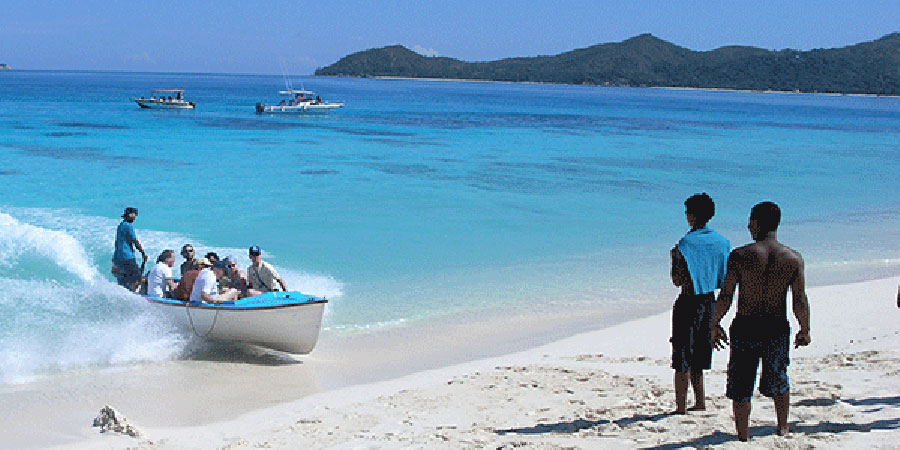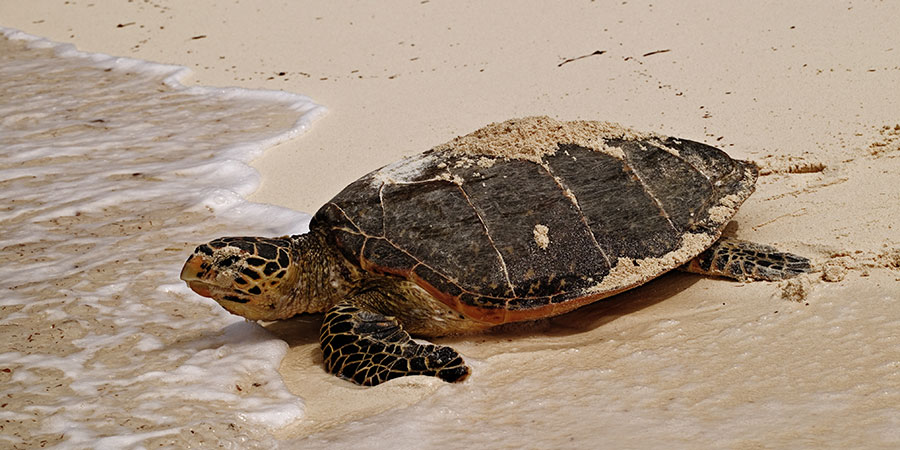
Before arriving on Cousin, my own expectations regarding the island and life as a volunteer were largely informed by both the Nature Seychelles website and the volunteer handbook, which in combination provide everything a prospective volunteer needs to know, from the moment they apply and start packing, right up until leaving the island. However, even with all this information on what I might expect from my time here, my experience so far has shown me that not everything was exactly as I had imagined it would be.
The island itself matched my expectation quite closely: white sand, abundant wildlife and small enough that you can easily know your way around after a week. However, there were still some surprises. I was prepared, of course, to share a house with several other volunteers and visiting researchers during my time here. What I soon discovered was that living on Cousin also means sharing a house (especially the kitchen) with a number of skinks, fodys, crabs and even a few geckos, all ready to seize any opportunity to come inside and help themselves to any food items left unattended. Overall, I have found that any frustration these little wildlife invasions may cause is generally surpassed by the entertainment they provide.
The house provided for volunteers is spacious enough to comfortably accommodate up to seven people and equipped with all the basic necessities, such as a gas cooker and two fridge-freezers. All volunteers were thrilled by a recent addition which, quite literally, introduced a breath of fresh air to nights on the island, as brand new electric fans were placed in every bedroom. One thing which I can admit filled me with some dread, however, was the thought of having to use a long-drop toilet throughout my stay, as these seldom inspire particularly pleasant images. So it was with some apprehension that I first inspected what would be the only sanitary facilities available for the next two and a half months. And, as it turns out, they’re really not that bad. While anyone expecting the comforts of indoor-plumbing is bound for disappointment, those familiar with this type of set-up will know that Cousin is far from the worst you could be facing.

As a volunteer during the Hawksbill nesting season, a large portion of the work consists of patrolling the beaches all around the island in search of turtles which have come up to lay. This naturally involves a fair amount of walking on sand and over rocky terrain, usually under an intense sun and high temperatures. Although it is generally a sweat-inducing task, I found it was easy to get used to walking around the island and the thrill of encountering a turtle during a patrol is more than enough to dispel any thoughts of tiredness.Having arrived at the very start of the nesting season, when turtles coming to the island are still few and far in between,
I knew there would also be various other jobs for volunteers to do, ranging from seabird monitoring to invasive species clearing. Overall, these tasks have proved to be both educational and enjoyable, and I was happy to find that the fact that all work is planned on a rotor system means there is always enough time to relax throughout the day.
Overall, living and working on Cousin has surpassed my expectations and my stay here has so far been hugely rewarding. My advice to anyone considering the possibility of volunteering on Cousin: do read up on everything you can and prepare for your stay here, but make sure you come with an open mind and your time on Cousin could very well be even better than you imagined.
Ines De Sousa

